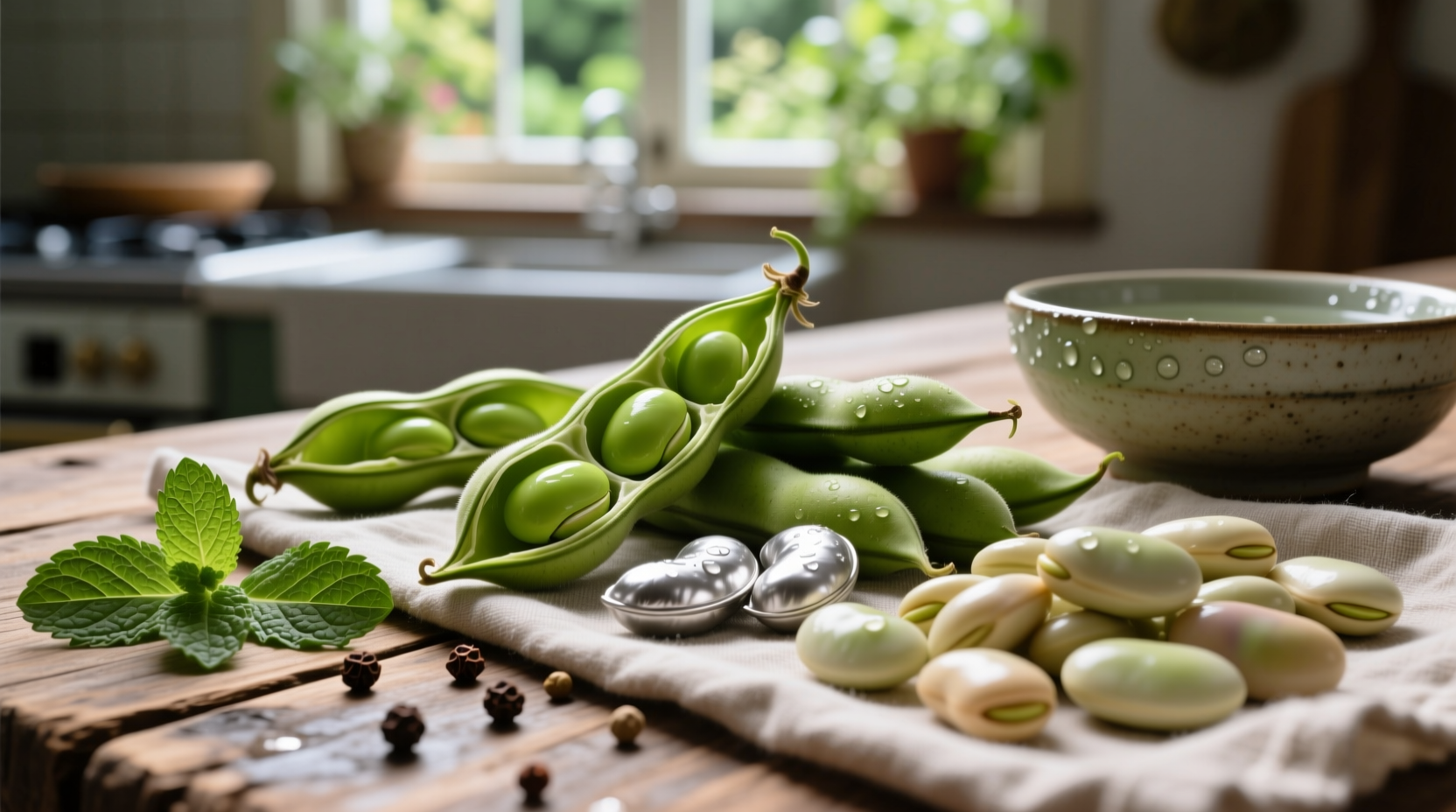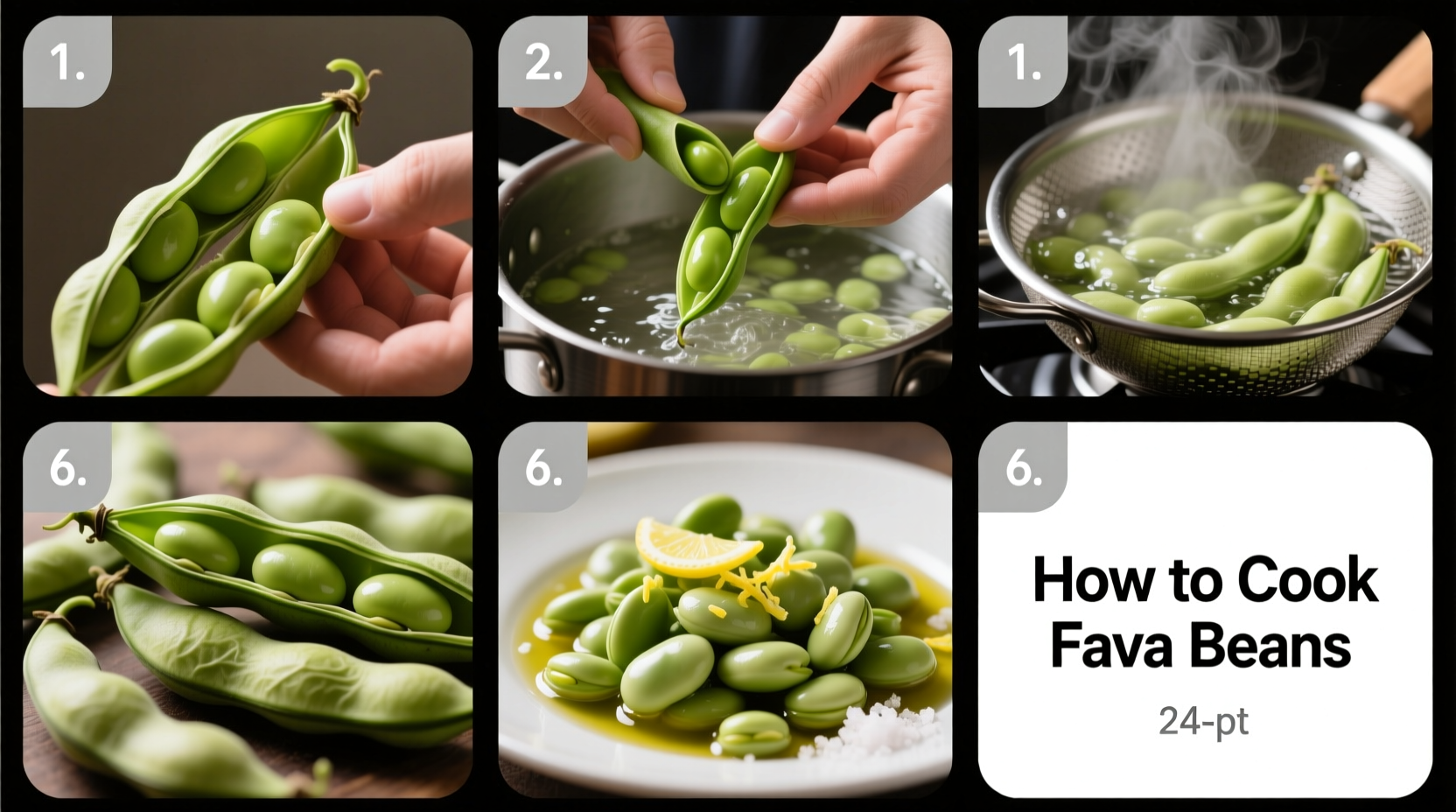Discover the complete process for transforming fresh fava beans from garden to plate with professional techniques that ensure optimal flavor and texture every time. Whether you're working with spring-harvested favas or dried varieties, these time-tested methods will help you avoid common pitfalls and create restaurant-quality results at home.
The Essential Fava Bean Preparation Process
Fava beans, also known as broad beans, offer a sweet, nutty flavor when properly prepared. Many home cooks struggle with their preparation because they skip crucial steps in the peeling process. Unlike other beans, favas require double peeling—first removing the beans from their large outer pods, then removing the individual beans' waxy skins.
Step 1: Selecting and Storing Fresh Favas
Choose pods that feel heavy for their size with vibrant green color. Avoid yellowing or bulging pods, which indicate overripeness. Fresh favas keep well for 2-3 days in the refrigerator crisper drawer. For longer storage, blanch and freeze the shelled beans.
Step 2: The Double Peeling Technique
Begin by snapping the end of each pod and pulling the string down the side to open it. Remove the beans and place them in a bowl. Bring a pot of salted water to boil while preparing the beans.
| Fava Bean Stage | Preparation Method | Time Required |
|---|---|---|
| Small, tender beans (under 1 inch) | No second peel needed | 5-7 minutes cooking |
| Medium beans (1-2 inches) | Blanch 90 seconds, then peel skins | 15-20 minutes cooking |
| Dried favas | Soak 12 hours, then cook 45-60 minutes | 1-2 hours total |
Step 3: Blanching and Final Peel
Drop prepared beans into boiling water for 60-90 seconds. Immediately transfer to an ice bath to stop cooking. Pinch the seam of each bean to remove the pale green skin. This step is crucial—leaving the skin on creates an unpleasant, slightly bitter texture.
Step 4: Cooking Methods
After peeling, you have several cooking options:
- Basic Simmer: Cook in salted water for 15-20 minutes until tender
- Garlic Sauté: Cook peeled beans in olive oil with minced garlic for 8-10 minutes
- Traditional Egyptian Ful: Simmer with cumin and lemon juice for 30 minutes, then mash slightly
Step 5: Flavor Pairings and Serving Suggestions
Favas pair beautifully with Mediterranean flavors. Try them with:
- Fresh mint and dill
- Lemon zest and olive oil
- Feta cheese crumbles
- Grilled lamb or chicken

Historical Context and Modern Applications
Fava beans have been cultivated since ancient times, with archaeological evidence dating back to 6000 BCE in Peru and 4000 BCE in Egypt. The University of California Agriculture and Natural Resources notes that favas were among the first domesticated food crops in the Old World (UC ANR). Understanding this history helps explain why certain preparation methods developed—they evolved to maximize flavor while minimizing potential digestive issues.
Important Considerations for Safe Preparation
While rare in Western populations, favism—a genetic condition affecting approximately 4% of Mediterranean populations—can cause severe reactions to raw or undercooked fava beans. The National Institutes of Health recommends thorough cooking for all consumers (NIH), though those with known G6PD deficiency should avoid favas completely. Proper preparation significantly reduces potential risks while enhancing flavor.
Advanced Techniques for Perfect Results
Professional chefs achieve exceptional texture through precise timing. When preparing for salads, undercook slightly as beans will continue to soften at room temperature. For mashing into dips, extend cooking time by 5 minutes. The ideal texture should yield easily when pressed between fingers but maintain shape in salads.
Troubleshooting Common Fava Bean Problems
Problem: Beans remain hard after cooking
Solution: Older beans require longer cooking times—add 5-10 minutes per cooking session.
Problem: Bitter aftertaste
Solution: Ensure complete removal of the pale skin after blanching.
Problem: Mushy texture
Solution: Shock immediately in ice water after cooking to stop the cooking process.
Seasonal Availability and Substitutes
Fresh favas appear in markets from late spring through early summer. During off-season, dried favas work well in stews and braises but require 12 hours of soaking. When unavailable, lima beans provide the closest flavor profile though with slightly different texture.
Can you eat fava beans without peeling?
Small, very young fava beans (under 1 inch) can be eaten with their skins, but most varieties require double peeling for optimal texture. Leaving the skin on larger beans creates a tough, slightly bitter experience that diminishes the delicate flavor.
How long do cooked fava beans last in the refrigerator?
Properly stored in an airtight container, cooked fava beans maintain quality for 3-4 days in the refrigerator. For longer storage, freeze them in portion-sized containers for up to 6 months without significant quality loss.
What's the best way to freeze fresh fava beans?
After double peeling, blanch beans for 90 seconds, cool in ice water, then spread on a baking sheet to freeze individually. Once frozen, transfer to freezer bags, removing as much air as possible. This method preserves texture and flavor for up to 12 months.
Why do fava beans cause digestive issues for some people?
Fava beans contain vicine and convicine, compounds that can trigger hemolytic anemia in individuals with G6PD deficiency (favism). Proper cooking reduces but doesn't eliminate these compounds. Those with this genetic condition should avoid favas completely, while others may experience mild digestive discomfort if eaten in large quantities.
How can I tell if fresh fava beans are past their prime?
Fresh fava pods should feel firm and snap crisply when bent. Avoid pods with dark spots, shriveling, or beans that rattle inside (indicating dryness). When shelled, the beans should be plump and vibrant green—not dull, discolored, or developing black spots.











 浙公网安备
33010002000092号
浙公网安备
33010002000092号 浙B2-20120091-4
浙B2-20120091-4